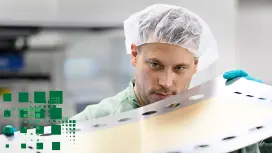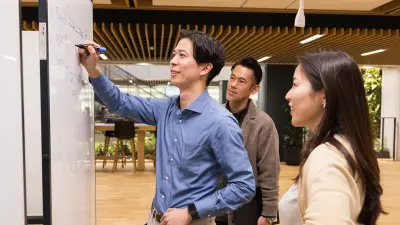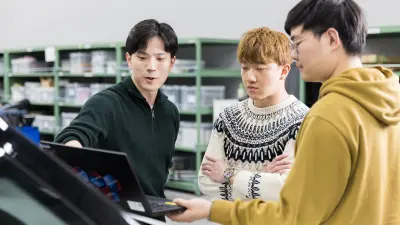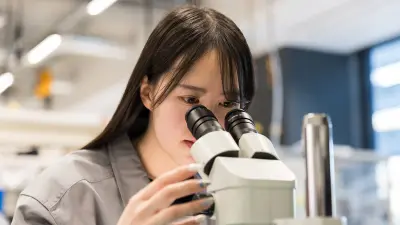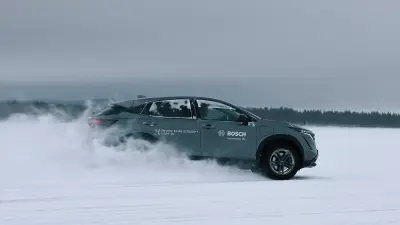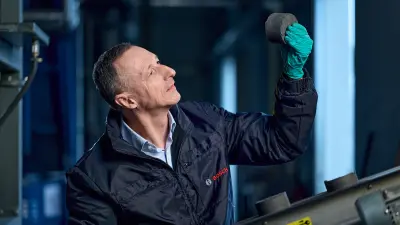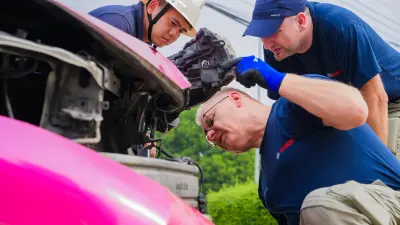Focus on innovation
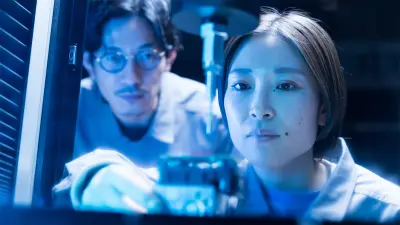
As the sun rises over Yokohama, Japan’s second largest city, the sky above the towering skyscrapers turns a bright shade of red. But the spectacle goes unnoticed by the many thousands of people milling across the city center’s major intersections and disappearing into the underground stations. They are on their way to work. Most people use the public transport system, one of the best and most efficient in the world. It is remarkably quiet on the crowded express trains and trams. Respect and restraint are qualities the Japanese value deeply.
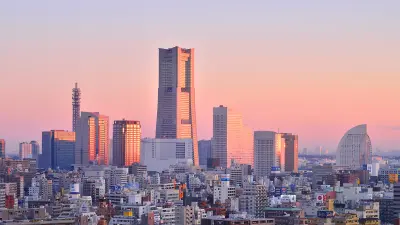
Many people stop off on their way at one of the large number of small eateries to order their coffee or matcha latte via touchscreen. Passing digital billboards emblazoned on the downtown skyscrapers, the streams of people flow into state-of-the-art office buildings. One of these is Bosch’s new regional headquarters, which was completed in fall 2024.
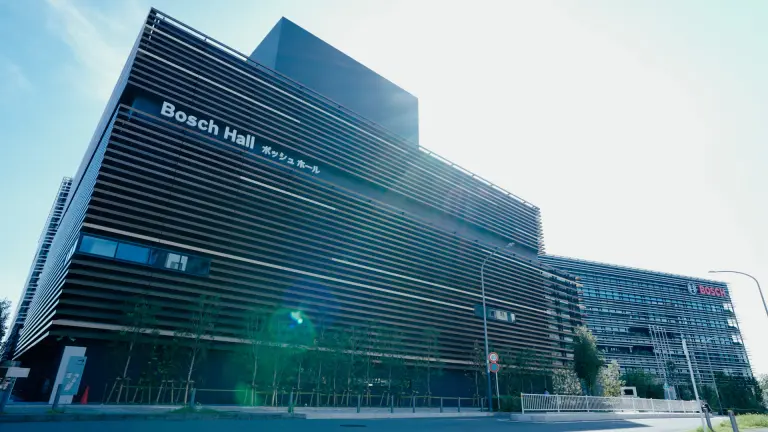
Loading the video requires your consent. If you agree by clicking on the Play icon, the video will load and data will be transmitted to Google as well as information will be accessed and stored by Google on your device. Google may be able to link these data or information with existing data.
A unique location
At the new office site, some 2,000 associates in research and development, administration, sales, and marketing are driving forward the technologies that will shape tomorrow’s world such as automated driving and driver assistance systems. Japan-wide, Bosch has approximately 6,300 associates, including 1,800 working in research and development. The new regional headquarters is unique in terms of architecture and design in the Bosch world: wood paneling in light tones, plants, and a few bright splashes of color are juxtaposed to create a modern yet warm atmosphere with unmistakably traditional Japanese elements. Large glass fronts flood the cleverly designed collaborative spaces with light. In one of them, we find Christian Mecker, President and Representative Director at Bosch in Japan, who proudly explains: “By investing 270 million euros in our new location, Bosch has reaffirmed its commitment to Japan.”
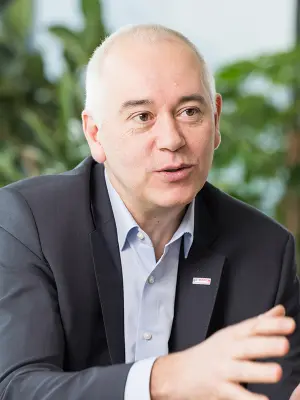
The people are the reason why I like doing business in Japan.
The company has meanwhile been present in this East Asian country for 114 years, and today manufactures products and solutions for different markets and many customers at ten plants, including components for the automotive market such as the electronic stability program (ESP) and the iBooster electromechanical brake booster. “Associates used to be spread across eight different locations in the Tokyo-Yokohama Metropolitan Area,” he explains. One objective was to pool activities to enable closer collaboration between the specialists from the various operating units. “Faster, more efficient, more creative,” as the head of Bosch in Japan puts it. His conclusion after six months: “We’re on the right track. Our teams are now working together to develop solutions that respond even more specifically to the needs of our customers.”
Before taking up his role as president of Bosch in Japan last October, the mechanical engineer, aged 57, was responsible for Bosch’s mobility business in South and East Asia. Born in France, he has long since made Japan his second home — as have his wife and three children. He has spent almost nine years of his professional career in the country, serving in various different capacities for Bosch.
Important market
Japan is the fourth largest economy in the world after the United States, China, and Germany. The Land of the Rising Sun is a leader in high-tech industries such as robotics, semiconductor technology and artificial intelligence (AI), as well as in electronics and mechanical engineering. Japan is also home to the world’s largest car manufacturer, and the world’s largest motorcycle manufacturer.
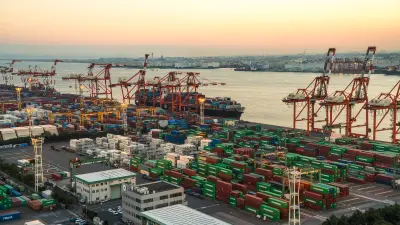
“These factors make the Japanese market attractive and important for Bosch,” explains Christian Mecker. “Japanese car manufacturers make up around 30 percent of the global automotive market. They are our customers, and they are leaders in many regions in the world.” In his view, it’s important that the company has a local presence for it to ideally meet the needs of local customers. Despite the difficult economic environment and declining vehicle production, Bosch was able to slightly increase its sales revenue in Japan in 2024.
Expanding business fields
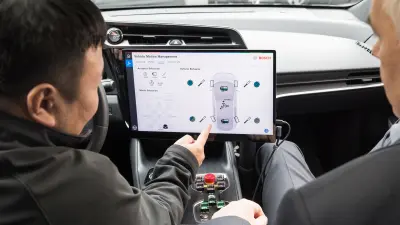
With its products and solutions in Vehicle Motion, Power Solutions, Cross-Domain Computing Solutions, the Two-Wheeler and Powersports business and others, the Mobility business currently accounts for 90 percent of sales revenue in Japan. Innovation is key for Bosch in this context, as illustrated by a development project in the Vehicle Motion division that Mecker mentions, which makes it possible to personalize the car’s driving behavior by adjusting it to individual needs.
Bosch’s strategic aim to create a better balance among its business sectors also concerns Japan. With its large number of industries, the island state offers great potential for expanding the company’s business fields. Take, for example, the planned acquisition of the global heating, ventilation, and air conditioning business for residential and light commercial buildings from Johnson Controls and Hitachi, which offers great opportunities for business in the Asia Pacific region. “We can build on Hitachi as a global licensed brand in the long term, while also establishing the Home Comfort division’s presence in Japan going forward,” says Christian Mecker. The closing of the acquisition is planned for mid-2025, once approval has been obtained from all antitrust authorities. The company also intends to expand the activities of Bosch Rexroth.
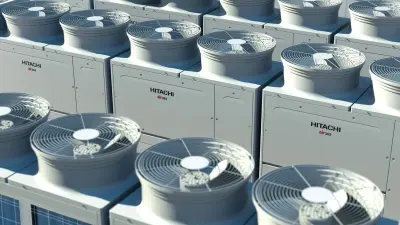
The president of Bosch in Japan leaves his office to make his way to the Vehicle Motion test laboratory, passing through the new atrium with round tables and colored chairs and associates concentrating intently on their screens, until he reaches the brightly lit, clean rooms. On the workbenches associates are testing prototypes of ESP modules. Mecker takes a keen look through a microscope and engages with the associates about their projects, stressing that “the people are the reason why I like doing business in Japan.”
Relationships based on trust
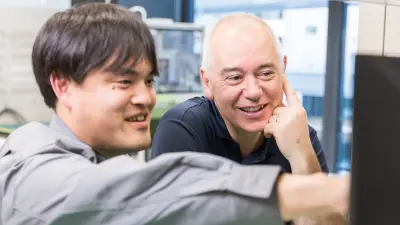
He has found that customers value Bosch as the ideal partner for new products and solutions due to its innovative strength and strong market position. “With a little patience, you can develop deep, trust-based relationships here and jointly develop new technologies key to future progress,” the president of Bosch in Japan explains. In Japan, he says, he learned to understand different cultures, to respect them, and developed a sensitivity to their nuances. “People in different countries have different ways of thinking. There are many ways of developing technologies, there’s not just one right solution.”
The roar of motorcycles can be heard through the open windows — a common sound in Japan, one of the countries in the world with the deepest affinity for the two-wheeled mode of transportation. Honda, Yamaha, Suzuki, and Kawasaki — all well-known names in the motorcycle industry — manage their global business from Japan. And they all work closely with Bosch.
A promising business field
Much to the delight of Geoff Liersch, head of the Two-Wheeler and Powersports business unit. The global headquarters for the business unit is located just a few miles from the new office in Yokohama. Some 240 associates work there, developing rider safety and assistance systems such as ABS, motorcycle stability control (MSC), and radar-based rider assistance systems for the global market. “We are the only Bosch business unit with headquarters outside Germany,” says Liersch, as he glances attentively at the display of a motorcycle in the on-site workshop. “This has many advantages for our two-wheeler business. We are in close proximity to the major motorcycle manufacturers and optimally positioned to meet their requirements.”
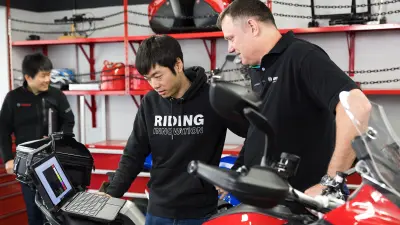
Since it was established in 2015 the business unit has developed very successfully: between 2017 and 2024 sales revenue grew by around 12 percent on average, despite a volatile economic environment. The global motorcycle market edged up by just 1 to 2 percent in the same period. Liersch confides the recipe for success: “With our know-how and our solutions, we are the only provider on the market to meet our customers' specific requirements.”
In late 2024, the business unit unveiled six rider assistance features with the new generation of radar sensors that make motorcycling even safer and more comfortable. And motorcycle enthusiasts can look forward to a multitude of further innovations in the pipeline: “Our aim is to offer essential safety functions together with technologies that make the ride more enjoyable,” says Liersch, who himself discovered his passion for motorcycling at a young age on his parents’ farm in Australia. He still enjoys testing two-wheelers himself today and is keen to drive progress forward. His vision: he sees no reason why automatic and safe emergency braking should not also be possible on a motorcycle.
Close partners
Customers highly appreciate Bosch’s innovative strength. Seiichi Kai, head of Kawasaki’s motorcycle business division, talks to a Bosch engineer at the location. “We have been working together closely and successfully in a trust-based relationship for many years,” he says. “Bosch’s global motorcycle business is managed from Japan, so the company is intimately familiar with the needs and requirements of Japanese motorcycle manufacturers as well as end customers.” He finds that Bosch’s great strength lies in developing technologies and solutions specifically tailored to customers’ requirements. The head of motorcycle business division bends down to study a Kawasaki Z H2, a sports motorcycle that stands for high performance and advanced technology. It features many Bosch components and systems, including the anti-lock braking system with the motorcycle stability control offering various riding modes, based on a set of different sensors.
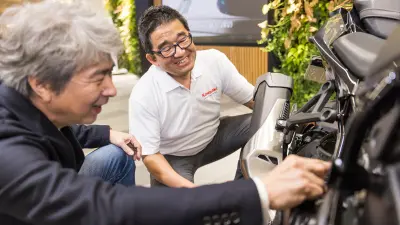
The ABS unit, which is the basis of rider safety and assistance systems, is not manufactured in Yokohama, but in Tochigi — just like the electronic stability program (ESP) and the iBooster electromechanical brake booster for vehicles. It takes about two hours to reach the northern region from Tokyo on the Shinkansen, Japan’s high-speed train and one of the most advanced rail networks in the world. When you get there, you find yourself in completely different surroundings: very rural, amid traditional Japanese detached houses, against the backdrop of Mount Nikkō-Shirane.
Exemplary manufacturing
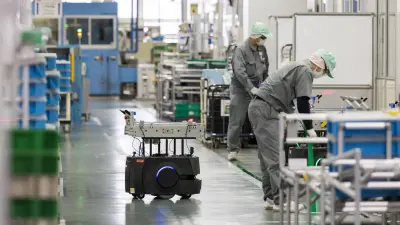
The production halls of the plant, built in 1990, dovetail tradition with modernity: as they transport parts directly to the production lines, state-of-the-art robots zip past old machines still working flawlessly.
“Japan has great strengths in digitalization, automation, and robotics”, says plant manager Shingo Hasegawa as he walks along the new production line for the iBooster. “You can see this in our assembly as well. For example, the production line we make the iBooster on is one of the most automated lines for this product at Bosch worldwide,” he explains, watching how the robot behind a glass panel welds housing parts for the electronic brake booster.
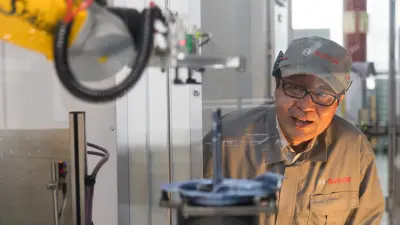
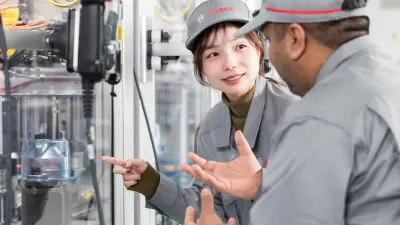
Tochigi is the lead plant for motorcycle ABS and supports plants in India and Thailand with production engineering and their processes. “Our engineers regularly travel to other manufacturing sites worldwide, share their knowledge, and support associates on site,” explains Hasegawa. The factories in Japan are known for their high quality and low error rates. “On the one hand, that is due to the discipline, motivation, and reliability of associates,” the engineer emphasizes, “and, on the other, to the Japanese Gemba concept, which fosters continuous improvement.” This involves being directly on site, observing processes, identifying problems, and developing solutions. “Managers regularly come to visit associates’ workplaces and take a look at the processes. They talk openly with each other and gain a better understanding of the challenges and opportunities,” explains Hasegawa.
The plant can look back on a long history of highlights. A further milestone is coming up this year: while the ninth ESP generation is currently still rolling off the production line there, the new ESP 10 production line from the lead plant in Blaichach, Germany, will be installed in Tochigi starting in June 2025. “We will be producing the first modules of the new ESP generation here in spring 2026,” says an evidently pleased Hasegawa. The ultra-modern, automated line will double the production volume. Engineers are already preparing for the changeover — and are using virtual reality to familiarize themselves virtually with the new production environment.
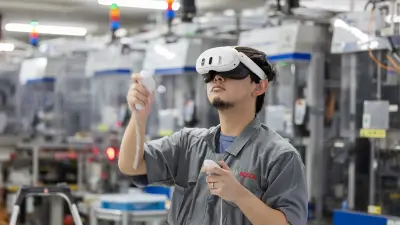
Meanwhile, the sun has started to set over the snow-capped peaks of Mount Nikkō-Shirane. Here, in Tochigi, there is no sign of the daily hustle and bustle of Tokyo, the world’s most populous city. After a long day at work, some Bosch teams make their way to the lively izakaya restaurants in the vicinity. Sitting together on the floor, they share raw fish, vegetables, and rice and drink sake, the traditional rice wine. That, too, is Japan.
